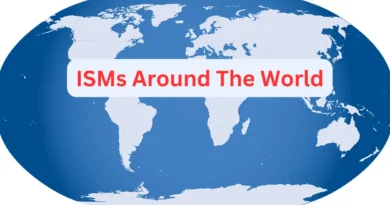Who Were The Original Native Americans
The Complex History of Human Settlement in North America
Who Were The Original Native Americans? The history of human settlement in North America is a rich tapestry woven from archaeological findings, genetic studies, and cultural narratives. While some groups jump to a mistaken view or understanding that American Indians were the first inhabitants of the continent, the reality is far more complex. Recent research suggests that the story of who first settled in North America is not as simple as previously believed. This article delves into the complexities of this history and explores why no land, anywhere in the world, has ever been unoccupied or unowned throughout human history.
Table of Contents
The Clovis First Hypothesis and Its Challenges
Who Were The Original Native Americans? For much of the 20th century, the “Clovis First” hypothesis dominated the archaeological opinions. According to this now debunked theory, the Clovis people, named after the distinctive stone tools first discovered in Clovis, New Mexico, were the first inhabitants of North America, arriving thousands of years ago. They were believed to have migrated from Siberia via the Bering Land Bridge, a land connection that existed during the last Ice Age.
However, several archaeological discoveries have challenged this hypothesis. Sites such as Monte Verde in Chile, which dates back to at least 1,500 years earlier, and others in North America that are older than Clovis sites suggest that humans were present on the continent much earlier. These findings imply that pre-Clovis cultures existed, raising questions about who these early settlers were and how they arrived in North America.
Genetic Evidence and Multiple Migrations
Genetic studies have provided further insights into the different groups that populated the Americas. Analysis of ancient DNA from skeletal remains has revealed a more complex migration history than previously thought. It appears that multiple waves of people migrated to the Americas over thousands of years, each contributing to the genetic makeup of the so called contemporary Native American populations.
One of the most significant genetic discoveries is the evidence of a group called the Ancient Beringians. DNA from an infant found in Alaska showed that the Ancient Beringians were a distinct group that split from other Native American ancestors several thousand years ago, long preceding the so called native Americans of today. This suggests a deep and intricate history of human settlement in North America, with different groups arriving at different times and possibly taking various routes.
The Coastal Migration Theory
An alternative to the land-based migration model is the coastal migration theory, which suggests the possibility that early humans traveled by boat along the Pacific coastlines of Asia and North America. This theory is supported by the discovery of ancient coastal sites and the understanding that coastal areas would have provided abundant resources for early settlers. The coastal route would have allowed early humans to bypass the ice-covered interior of North America, making it a viable path for migration long before the ice-free corridors opened up.
The Debate Over “First Peoples”
The question of who the original inhabitants of North America were remains uncertain. The lack of definitive archaeological evidence from the earliest periods makes it difficult to identify a single group as the “first people.” Instead, the evidence points to a series of migrations and settlements by diverse groups over millennia.
Complicating matters further is the fact that oral histories and cultural narratives of many Native American tribes describe their origins in different ways, often emphasizing a long-standing connection to their lands. These narratives are crucial to understanding the cultural and historical identity of these groups but do not always align with the archaeological and genetic evidence.
The Global Context: Land Ownership and Human Migration
Who Were The Original Native Americans? The complexity of human migration and settlement is not unique to North America. Throughout history, humans have migrated, settled, and re-settled across the globe, often displacing or integrating with existing populations. This continuous movement has made it nearly impossible to identify any land that has always been owned by one group of people.
For instance, Europe has seen countless waves of migration, from the early spread of Homo sapiens into the continent, through the movements of Celtic, Germanic, Slavic, and other tribes, to the establishment of modern nation-states. Africa, often considered the cradle of humanity, has similarly experienced extensive migration and cultural exchange among its diverse populations over thousands of years.
In Asia, the story is equally complex, with ancient civilizations rising and falling, and populations moving across vast distances. The concept of land ownership and territorial boundaries such as borders, is a relatively recent development in human history, often tied to the emergence of agriculture, urbanization, and centralized political structures.
The Elusive Quest for “Original” Peoples
Given the extensive history of human migration and settlement, the attempt to identify the “original” people of any given land is inherently fraught with difficulties. Archaeological and genetic evidence can only provide snapshots of the past, often leaving gaps in the record. Cultural narratives offer valuable insights but are shaped by historical context and can vary widely between different groups.
In North America, the diverse and overlapping histories of migration, settlement, and cultural development mean that it is unlikely we will ever pinpoint a single “first” population. Instead, we must recognize the continent’s deep and multifaceted human history, one characterized by continuous movement, adaptation, and change.
Who Were The Original Native Americans
Conclusion
Who Were The Original Native Americans? The history of human settlement in North America defies simple explanations. While American Indians have a profound and ancient connection to the land, they were not the continent’s first inhabitants. The evidence points to a series of migrations by diverse groups over thousands of years, each contributing to the rich diversity of human history in the region.
This complexity is not unique to North America; it is a global phenomenon. Human history is marked by continuous movement and the mingling of cultures. The notion of land ownership and the identification of “original” peoples are false constructs that often oversimplify the dynamic and interconnected nature of human history. Recognizing this complexity is crucial to understanding our shared past and appreciating the diverse heritage that shapes our world today.




